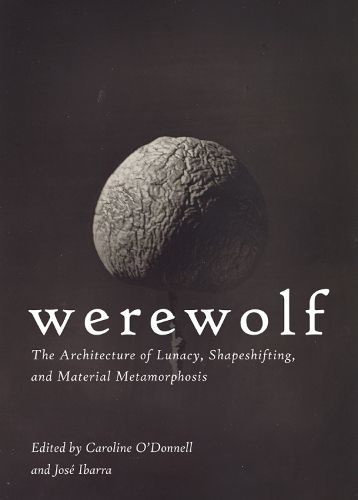Readings Newsletter
Become a Readings Member to make your shopping experience even easier.
Sign in or sign up for free!
You’re not far away from qualifying for FREE standard shipping within Australia
You’ve qualified for FREE standard shipping within Australia
The cart is loading…






As climate, culture, and technology evolve and become increasingly unpredictable, architecture’s stasis becomes more incongruous. Werewolf explores an emerging but under-investigated branch of architecture that embraces the transformation of form, performance, and the responsiveness to environments and context. These ideas are studied through architectural precedents and framed by critical essays by Jesse Reiser, Greg Lynn, Jimenez Lai, Spyros Papapetros, Kari Weil, as well as the editors. The shift from passive buildings to reactive structures is now imperative, as climate change and political turmoil exacerbate the unpredictability of environments. Werewolf expands on the architect’s agency to critically address political, social, and environmental unrest. Revealing the cunning and agile ways in which architecture can negotiate rather than resist change, this book departs from the fixed Vitruvian man and uses the figure of the werewolf to propose a model where changes of state, mutation, and decomposition are conceptually fundamental.
$9.00 standard shipping within Australia
FREE standard shipping within Australia for orders over $100.00
Express & International shipping calculated at checkout
As climate, culture, and technology evolve and become increasingly unpredictable, architecture’s stasis becomes more incongruous. Werewolf explores an emerging but under-investigated branch of architecture that embraces the transformation of form, performance, and the responsiveness to environments and context. These ideas are studied through architectural precedents and framed by critical essays by Jesse Reiser, Greg Lynn, Jimenez Lai, Spyros Papapetros, Kari Weil, as well as the editors. The shift from passive buildings to reactive structures is now imperative, as climate change and political turmoil exacerbate the unpredictability of environments. Werewolf expands on the architect’s agency to critically address political, social, and environmental unrest. Revealing the cunning and agile ways in which architecture can negotiate rather than resist change, this book departs from the fixed Vitruvian man and uses the figure of the werewolf to propose a model where changes of state, mutation, and decomposition are conceptually fundamental.